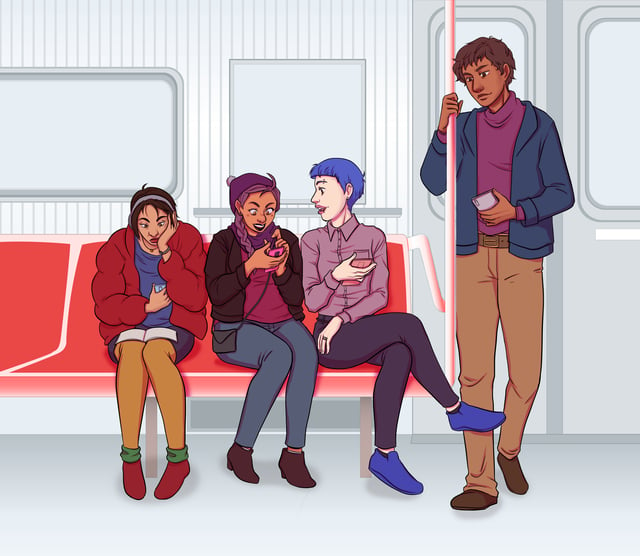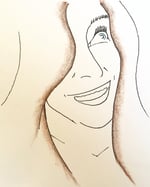 We're so excited to share this exclusive interview with Kate Clayborn, who is celebrating the release of her new book, Love Lettering, on December 31. Considering its themes of renewal and reconnection, what better time to read it than as we reflect on the start of a new year and a new decade?
We're so excited to share this exclusive interview with Kate Clayborn, who is celebrating the release of her new book, Love Lettering, on December 31. Considering its themes of renewal and reconnection, what better time to read it than as we reflect on the start of a new year and a new decade?
Please enjoy the interview, and if you decide to pick up the book, we'll have links at the end!
***
First, congratulations on the release of Love Lettering and thank you for another lovely book. We all loved the Chance of a Lifetime series and were/are eagerly anticipating your future stories.
Thank you so much—this means so much to me.
I was surprised by how different Love Lettering felt from your previous books. While the Chance of a Lifetime series is so deeply grounded in friendship, the pervasive feeling in this story is one of loneliness. Meg is estranged from her family and her lifelong best friend and roommate, who is now moving out. Reid is also lonely, living as an outsider in a city and profession he doesn't connect with. We eventually figure out how both of them came to this point in their lives, but how did you? They come from such different backgrounds that it's like a bus and a train meeting at the same station. (Dare I say Grand Central?)
When I set out to write Love Lettering, I knew I wanted part of the story to be about a friendship in crisis—this had been something on my mind a lot after I wrote the Chance of a Lifetime series, because in those books, the friendship between the three heroines is solid and comfortable, especially because those women had very recently gone through a pretty unique life experience together. But of course friendship in our adult lives can be so complicated, so fraught and difficult—especially when our friends are having different experiences than we are, or when we live in different places, or when one of us changes in some big way. And I think the love between friends is as complicated, and as rich and rewarding, as the love between romantic partners.
I wanted the book to explore this alongside the romantic relationship—in some ways, Reid’s entry into Meg’s life opens a door for her to explore her isolation, and what responsibility she has for it. So, as you say, it was essential to me that Reid and Meg are so different, and I tried to be intentional in how I crafted his character. Learning how to communicate with Reid, someone who has such a different style than her, allows her to see the possibilities for how to communicate with everyone in her life—her best friend, her colleagues, her family.
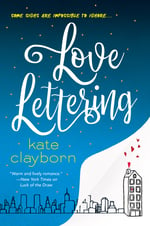 Love Lettering reads like a story of three loves lost and rebuilt - love of a place, love of an artistic passion turned profession, and love of a person. It's a complex story, but somehow the romance still takes center stage. How did you balance the three without sacrificing the romance?
Love Lettering reads like a story of three loves lost and rebuilt - love of a place, love of an artistic passion turned profession, and love of a person. It's a complex story, but somehow the romance still takes center stage. How did you balance the three without sacrificing the romance?
Well, I should say up front that I’ve really thought every book I’ve written has challenged me in one way or another, but when I was writing Love Lettering I did often feel like I’d set myself a challenge like never before—because you’re right, I did want to tell multiple love stories here, and I hope I succeeded!
I guess what I would say is that I love romances where the main characters become fuller, better versions of themselves as result of their discovery of one another, and so with every scene I wrote between Meg and Reid, I tried to show that each one of them takes a step, each one of them tries. But even when Meg is not on the page with Reid, I worked to make it so that the influence of their journey together is being felt—how she sees the streets of Brooklyn differently because of the games they’ve played together, how she experiments with new artistic styles because of the fascination he’s shown for her talent, how she attempts to be more direct with her friends because of how he has spoken to her. Meg becomes more open to and more understanding of love in all its forms because of this path she walks with Reid.
Hand lettering is of course a major element of the book, with Meg thinking in serifs, risers and descenders, swoops and flourishes. One need only look at your Instagram to see that your lettering is gorgeous. But unless I'm mistaken, you don't share videos of yourself teaching others to letter like Meg does. Did you watch anyone in particular for inspiration?
This is so nice of you to say; thank you! I would never video myself doing lettering because I certainly don’t have the smooth talent of the pros—I have to do a lot of pencil-sketching first, most of the time. No surprise that I learn first by reading, so I read some books about hand-lettering (and calligraphy) when I started this project, but eventually I started following hand-lettering and sign-painting videos on Instagram. I wouldn’t say I watched anyone in particular—following the #handlettering hashtag would give me so many different artists’ work to admire.
One thing I did eventually learn was that many letterers are often posting sped-up versions of their lettering—I loved it when they would post both versions, showing how long it took in real time. And even though it’s not what Meg does in the book, I have to say, I became sort of obsessed with sign-painting—the history of it (especially how it was done for the old street signs Meg and Reid often search for), and the current state of it. There are so many talented artists out there. It has brought me a lot of joy to witness their excellence.
If I put on my faux-therapist hat, it seems as though Meg is trying to fix/prevent the romantic problems of everyone else since she can't fix the impact her parents' terrible relationship had on her own attachments. I found myself wondering-- is she more helpful or harmful?
I think of Meg as being a person who just has a lot to say—things she’s afraid to say, because she had to play such a peacemaker role in her formative years with her parents. This is part of the “block” she’s experiencing at the beginning of the book; she’s held so much inside that she almost can’t control how her true feelings will reveal themselves. I think what she did to Reid before the book starts—hiding a message in his wedding program—she knows this was wrong; she knows this was overstepping and doing more harm than good. But over the course of the book, we see Meg in other situations where she genuinely wants to express concern for someone stuck in a lousy relationship, and she just doesn’t know how.
I think this is such a tough, human line to walk, especially for someone who wasn’t taught how to productively engage in conflict—how to know the difference between being sort of a judgmental busybody, and how to know when to say to someone, “hey, this situation doesn’t seem great to me; are you okay?” I hope she comes to the point where she knows the difference, and where she can be truly helpful.
Reid has a pretty big secret. How did you keep things about Reid hidden for the purposes of the plot while still making sure he was a character readers could connect to?
This was my first time writing a single POV romance, and I think it will be clear to readers why when they read the book. But it did mean I had to develop Reid as a character in other ways, so each one of his lines of dialogue had to be really carefully crafted, and each small gesture he made—either toward Meg, or his own habits and qualities—had to be very speaking. Each one had to point to what I thought was essential about Reid: he is a noble man, even if he is a little stuffy, a little awkward. I wanted readers to feel that nobility almost every time he was on the page.
What are you working on next?
I’m currently working on my next standalone contemporary romance—I’m hoping the blurb will be out soon!
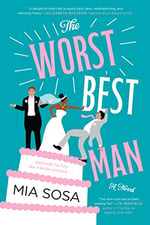 What have you read (and loved) recently?
What have you read (and loved) recently?
I’m hoping everyone will pre-order Mia Sosa’s The Worst Best Man, which I thought was really clever and funny. I’ve also been so lucky to read an advanced copy of Ruby Lang’s House Rules, which is the third in her latest series, and I adored it, as I have every book in this series. I also am obsessed with Joanna Shupe’s latest, The Prince of Broadway, which just pressed every single one of my romance-reading buttons. Next up for me is Therese Beharrie’s One Last Chance. Therese has been doing such amazing, brave work in this series—whole romances set over the course of single days! It’s so impressive. Anyway, I always give answers that are too long for these! I just really love books.
We do too, Kate. We do too.
***
Read more about Kate over at her website, or follow her on Twitter, Facebook or Instagram.
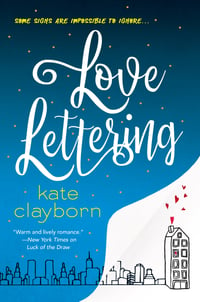 About Love Lettering:
About Love Lettering:
In this warm and witty romance from acclaimed author Kate Clayborn, one little word puts a woman’s business—and her heart—in jeopardy . . .
Meg Mackworth’s hand-lettering skill has made her famous as the Planner of Park Slope, designing custom journals for her New York City clientele. She has another skill too: reading signs that other people miss. Knowing the upcoming marriage of Reid Sutherland and his polished fiancée was doomed to fail is one thing, but weaving a secret word of warning into their wedding program is another. Meg may have thought no one would spot it, but she hadn’t counted on sharp-eyed, pattern-obsessed Reid.
A year later, Reid has tracked Meg down to find out how she knew that his meticulously planned future was about to implode. But with a looming deadline and a bad case of creative block, Meg doesn’t have time for Reid’s questions—unless he can help her find her missing inspiration. As they gradually open up to each other, both try to ignore a deepening connection between them. But the signs are there—irresistible, indisputable, urging Meg to heed the messages Reid is sending her, before it’s too late . . .
Pick up your copy (affiliate links):
Amazon ◊ Apple Books ◊ Barnes & Noble ◊ Kobo ◊ The Ripped Bodice ◊ Signed from Fountain Bookstore

